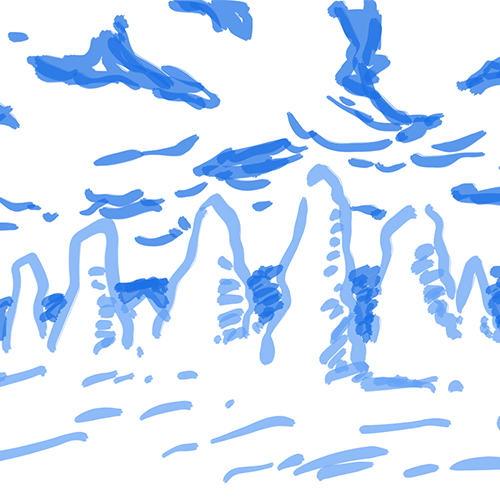
Mt. Gassan
Mt. Gassan, a sacred mountain with an elevation of 1,984 meters, has been thought of as a mountain where the souls of the surrounding people reside. Nowadays, many climbers visit the mountain, and it is an easy mountain to climb with well maintained trails. It is also known as a mountain with deep snow, and due to the large amount of snowfall, the Gassan Ski Resort is open from April until July or August, when the snow disappears.

Mt. Yudono
Mt.Yudono is the largest sacred site in the Tohoku region, and during the Edo period (1603-1868), when it was at its peak, many worshippers came from the Hokuriku and Kanto regions. As Matsuo Basho wrote in his haiku, “Untold stories of Yuden ni Nusuru Tamotaka,” it was considered taboo to talk about or listen to such stories.

Mt. Haguro
Mt.Haguro is also known as a mountain of mountain priests, and Touge at the foot of the mountain is a village of mountain priests with many lodgings, and at the end of August, many mountain priests come to the mountain to practice asceticism, and the sound of conch shells echoes in the air.

Mt. Chokai
The spring water from Mt. Chokai flows out from Maruike-sama at the foot of the mountain into the Ushitogawa River, which flows into the Sea of Japan. The spring water from Mt. Chokai flows out into the Sea of Japan as the Ushiwatari River from Maruike at the foot of the mountain.

Yamadera
A scenic spot known for the haiku by Basho Matsuo, who wrote, “The silence and the sound of cicadas soaking into the rocks.

Mt.Zao
Mt.Zao is famous for ski resort, Zao Onsen, which attracts many skiers in the winter and is also famous for the ice monster. There are many lodging facilities and three public bathhouses in the Zao hot spring town.

Gassan Snow landNishikawa Town is known as one of the heaviest snowfall areas in the world. During the winter, you can ride on a snowmobile in the Yumiharidaira area, glide on the snow with a tube rider or banana boat. There are many snow activities for children and adults to enjoy.
